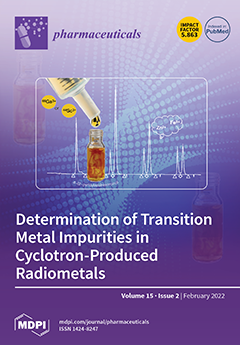Over the past few decades, the development of broad-spectrum anticancer agents with anti-angiogenic activity has witnessed considerable progress. In this study, a new series of pyrazolo[3,4-d]pyrimidines based on a phenylfuroxan scaffold were designed, synthesized, and evaluated, in terms of their anticancer activities. NCI-60 cell one-dose screening revealed that compounds
12a–
c and
14a had the best MGI%, among the tested compounds. The target fluorinated compound
12b, as the most active one, showed better anticancer activity compared to the reference drug sorafenib, with IC
50 values of 11.5, 11.6, and 13 µM against the HepG-2, A2780CP, and MDA-MB-231 cell lines, respectively. Furthermore, compound
12b (IC
50 = 0.092 µM) had VEGFR-2-inhibitory activity comparable to that of the standard inhibitor sorafenib (IC
50 = 0.049 µM). Furthermore, the ability of compound
12b in modulating MAPK signaling pathways was investigated. It was found to decrease the level of total ERK and its phosphorylated form, as well as leading to the down-regulation of metalloproteinase MMP-9 and the over-expression of p21 and p27, thus leading to subG1 cell-cycle arrest and, thus, the induction of apoptosis. Additionally, compound
12b decreased the rate of wound healing in the absence of serum, in comparison to DMSO-treated cells, providing a significant impact on metastasis inhibition. The quantitative RT-PCR results for
E-cadherin and
N-cadherin showed lower expression of the neuronal
N-cadherin and increased expression of epithelial
E-cadherin, indicating the ability of
12b to suppress metastasis. Furthermore,
12b-treated HepG2 cells expressed a low level of anti-apoptotic
BCL-2 and over-expressed proapoptotic
Bax genes, respectively. Using the DAF-FM DA fluorescence probe, compound
12b produced NO intracellularly as efficiently as the reference drug JS-K. In silico molecular docking studies showed a structural similarity through an overlay of
12b with sorafenib. Interestingly, the drug-likeness properties of compound
12b met the expectations of Pfizer’s rule for the design of new drug candidates. Therefore, this study presents a novel anticancer lead compound that is worthy of further investigation and activity improvement.
Full article






